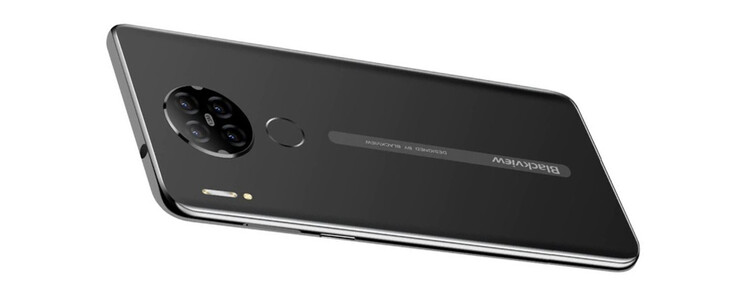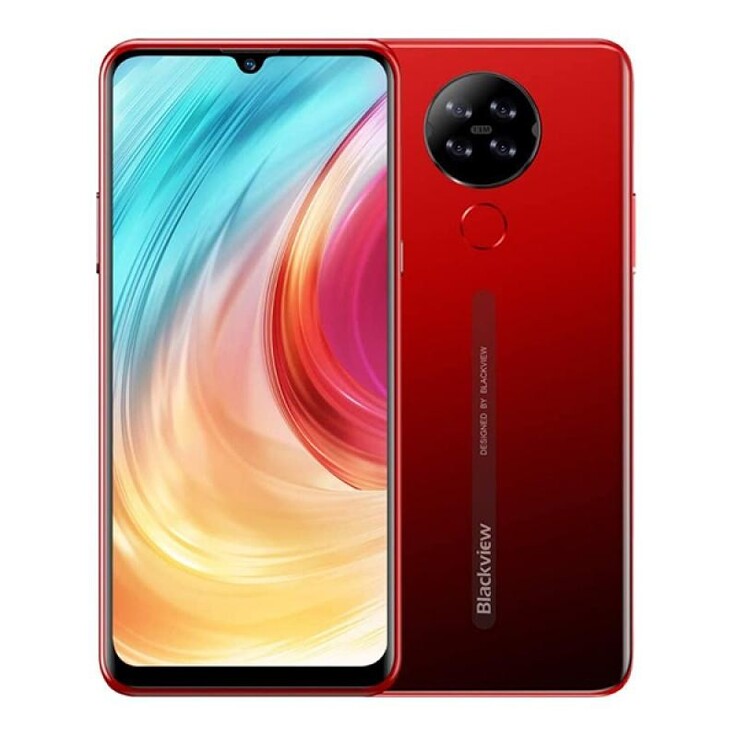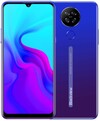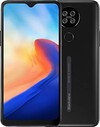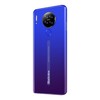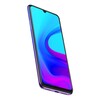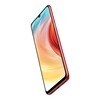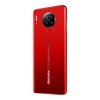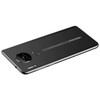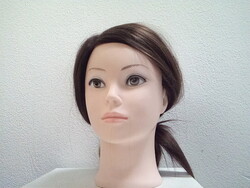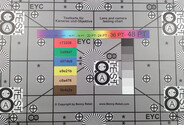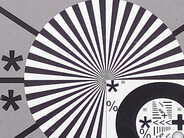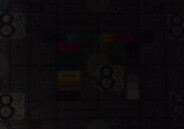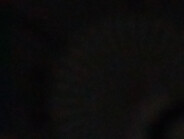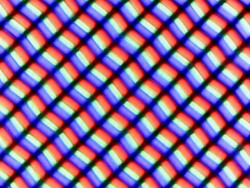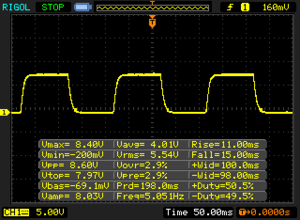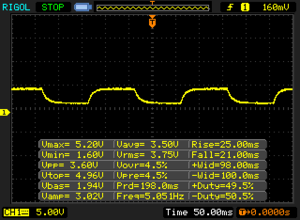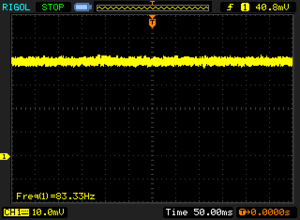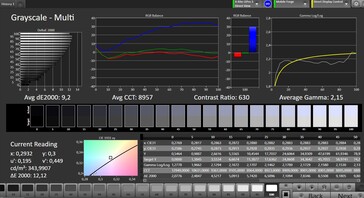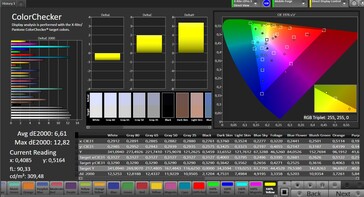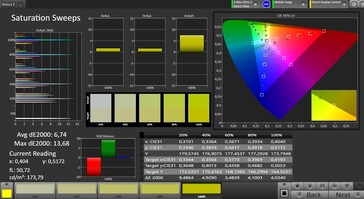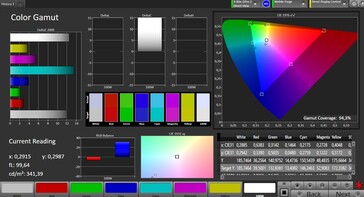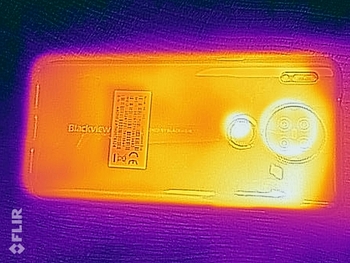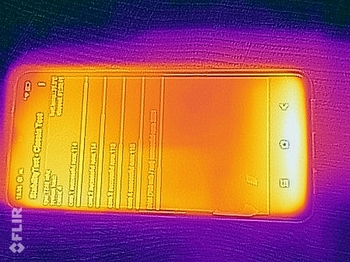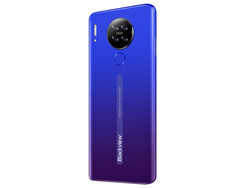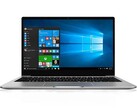Blackview A80 Smartphone Review - Cell phone for little money
Possible competitors in comparison
Rating | Rating Version | Date | Model | Weight | Drive | Size | Resolution | Price from |
|---|---|---|---|---|---|---|---|---|
| 68.8 % v7 (old) | v7 (old) | 03 / 2021 | Blackview A80 MT6737, Mali-T720 | 180 g | 16 GB eMMC Flash | 6.21" | 1560x720 | |
| 74.5 % v7 (old) | v7 (old) | 03 / 2020 | Blackview A80 Pro Helio P25, Mali-T880 MP2 | 180 g | 64 GB eMMC Flash | 6.49" | 1560x720 | |
| 68.3 % v7 (old) | v7 (old) | 05 / 2020 | Nokia 1.3 SD 215, Adreno 308 | 155 g | 16 GB eMMC Flash | 5.71" | 1520x720 | |
| 69.3 % v7 (old) | v7 (old) | 02 / 2020 | Blackview A60 MT6580M, Mali-400 MP2 | 171 g | 16 GB eMMC Flash | 6.10" | 1280x600 |
Case, equipment and operation - Scarce memory in the A80
The Blackview A80 is available in black, blue or red, with all but the black model offering a gradient color on the back. The back is made of very simple plastic, but it is reasonably sturdy. For its size, the Blackview A80 is not necessarily light, but it feels quite good in the hand.
The storage configuration is very meager: Just 16 GB of mass storage and 2 GB of RAM are installed. The user can still use just under 10 GB of data storage, so you have to think about which apps to install or whether to store photos in the cloud. The storage can be expanded by up to 128 GB via microSD, but the smartphone did not work with all microSD cards in our test.
The Wi-Fi works quite fast in our test with the reference router Netgear Nighthawk AX12 compared with similarly priced smartphones. The coverage of LTE frequencies is limited to the bare minimum.
Android 10 Go is the operating system of the Blackview A80. The security patches are already 4 months old at the time of testing and thus outdated.
| Networking | |
| iperf3 transmit AX12 | |
| Blackview A80 | |
| Nokia 1.3 | |
| Blackview A80 Pro | |
| Blackview A60 | |
| iperf3 receive AX12 | |
| Blackview A80 | |
| Blackview A80 Pro | |
| Blackview A60 | |
| Nokia 1.3 | |
Cameras - Four lenses? Not really...
The main lens is a 13-megapixel camera on the back. Although it looks like there are four lenses in total, the other three only have a resolution of 640 x 480 pixels and are thus not usable for photos. In fact, they cannot be used actively, but are only supposed to support the main camera
Photos from the main camera quickly look overexposed and are actually sharp, but somewhat lacking in detail. Surfaces quickly look unclean and the autofocus fails in low light, but the brightening is okay
The Blackview A80 produces reasonably sharp photos in the lab, but the contrast suffers visibly and the problem of unclean surfaces remains. At 1 lux, almost nothing is recognizable in the pictures
Videos can be recorded in Full HD with 30 fps at most, but brightness transitions and autofocus are very slow. Thus, you should not expect too much from the camera unit. At most, the main lens is suitable for snapshots
The front-facing camera has a resolution of 5 megapixels. The photos are a bit blurry and look as if the camera glass is slightly uneven.
Image comparison
Choose a scene and navigate within the first image. One click changes the position on touchscreens. One click on the zoomed-in image opens the original in a new window. The first image shows the scaled photograph of the test device.
Hauptobjektiv BlumeHauptobjektiv UmgebungHauptobjektiv Low Light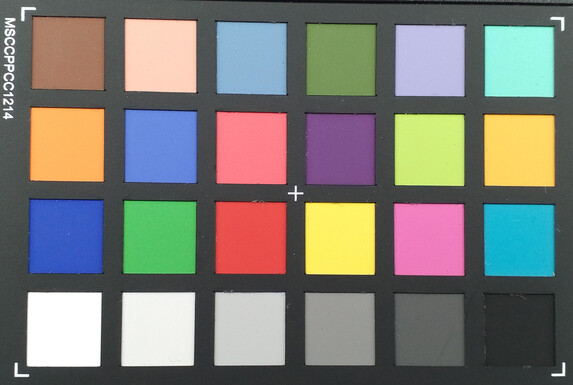
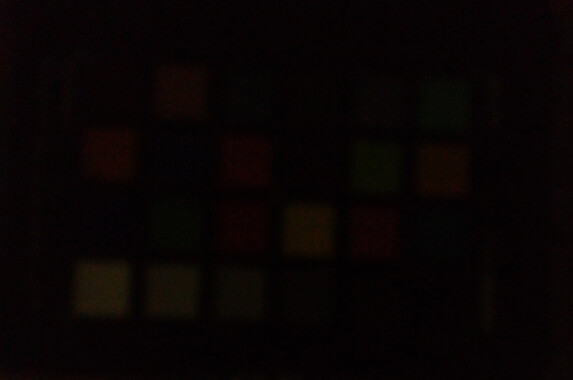
Display - Dark and inaccurate
The screen clearly falls behind in terms of brightness and also shows very unbalanced illumination. There is little contrast on the screen and colors are displayed reasonably accurately at best.
In addition, the screen flickers at a fairly low frequency at low brightness, which can lead to headaches for sensitive people.
| |||||||||||||||||||||||||
Brightness Distribution: 75 %
Center on Battery: 345 cd/m²
Contrast: 566:1 (Black: 0.61 cd/m²)
ΔE ColorChecker Calman: 6.61 | ∀{0.5-29.43 Ø4.78}
ΔE Greyscale Calman: 9.2 | ∀{0.09-98 Ø5}
94.3% sRGB (Calman 2D)
Gamma: 2.15
CCT: 8957 K
| Blackview A80 IPS, 1560x720, 6.2" | Blackview A80 Pro IPS, 1560x720, 6.5" | Nokia 1.3 IPS, 1520x720, 5.7" | Blackview A60 IPS, 1280x600, 6.1" | |
|---|---|---|---|---|
| Response Times | 6% | -10% | -45% | |
| Response Time Grey 50% / Grey 80% * (ms) | 46 ? | 44 ? 4% | 55 ? -20% | 66 ? -43% |
| Response Time Black / White * (ms) | 26 ? | 24 ? 8% | 26 ? -0% | 38 ? -46% |
| PWM Frequency (Hz) | 83.3 ? | 1562 ? | ||
| Screen | 55% | 43% | 61% | |
| Brightness middle (cd/m²) | 345 | 565 64% | 456 32% | 460 33% |
| Brightness (cd/m²) | 324 | 554 71% | 406 25% | 448 38% |
| Brightness Distribution (%) | 75 | 93 24% | 83 11% | 90 20% |
| Black Level * (cd/m²) | 0.61 | 0.32 48% | 0.33 46% | 0.19 69% |
| Contrast (:1) | 566 | 1766 212% | 1382 144% | 2421 328% |
| Colorchecker dE 2000 * | 6.61 | 6.84 -3% | 5.22 21% | 6.95 -5% |
| Colorchecker dE 2000 max. * | 12.82 | 11.01 14% | 8.38 35% | 13.3 -4% |
| Greyscale dE 2000 * | 9.2 | 8.1 12% | 6.4 30% | 8.3 10% |
| Gamma | 2.15 102% | 2.49 88% | 2.186 101% | 2.001 110% |
| CCT | 8957 73% | 9040 72% | 8108 80% | 6493 100% |
| Total Average (Program / Settings) | 31% /
45% | 17% /
32% | 8% /
40% |
* ... smaller is better
Display Response Times
| ↔ Response Time Black to White | ||
|---|---|---|
| 26 ms ... rise ↗ and fall ↘ combined | ↗ 11 ms rise | |
| ↘ 15 ms fall | ||
| The screen shows relatively slow response rates in our tests and may be too slow for gamers. In comparison, all tested devices range from 0.1 (minimum) to 240 (maximum) ms. » 61 % of all devices are better. This means that the measured response time is worse than the average of all tested devices (20.2 ms). | ||
| ↔ Response Time 50% Grey to 80% Grey | ||
| 46 ms ... rise ↗ and fall ↘ combined | ↗ 25 ms rise | |
| ↘ 21 ms fall | ||
| The screen shows slow response rates in our tests and will be unsatisfactory for gamers. In comparison, all tested devices range from 0.165 (minimum) to 636 (maximum) ms. » 78 % of all devices are better. This means that the measured response time is worse than the average of all tested devices (31.6 ms). | ||
Screen Flickering / PWM (Pulse-Width Modulation)
| Screen flickering / PWM detected | 83.3 Hz | ≤ 20 % brightness setting | |
The display backlight flickers at 83.3 Hz (worst case, e.g., utilizing PWM) Flickering detected at a brightness setting of 20 % and below. There should be no flickering or PWM above this brightness setting. The frequency of 83.3 Hz is very low, so the flickering may cause eyestrain and headaches after extended use. In comparison: 53 % of all tested devices do not use PWM to dim the display. If PWM was detected, an average of 8108 (minimum: 5 - maximum: 343500) Hz was measured. | |||
Performance, emissions and battery life - little power in the Blackview phone
The Mediatek MT6737 was never a powerhouse, but it is now also 5 years old and thus questionable as a choice for a current entry-level smartphone. In any case, the comparison devices offer considerably more power.
The case heating remains inconspicuous, even under longer load.
The mono speaker in the smartphone only reproduces sound with average volume and is not really good in terms of quality: Trebles boom unpleasantly in the ear and the sound is very thin overall. The sound can be transmitted to external audio devices via a 3.5 mm interface or Bluetooth 4.2.
In terms of battery life, the Blackview A80 is on par with the Blackview A60. 12:03 hours is a runtime suitable for everyday use, but other devices in this price range offer much more. Charging takes quite a long time since the charger only has a power of 5 watts.
| PCMark for Android - Work 2.0 performance score (sort by value) | |
| Blackview A80 | |
| Blackview A80 Pro | |
| Nokia 1.3 | |
| Average Mediatek MT6737 (2313 - 2768, n=13) | |
| GFXBench 3.0 | |
| on screen Manhattan Onscreen OGL (sort by value) | |
| Blackview A80 | |
| Nokia 1.3 | |
| Average Mediatek MT6737 (2.1 - 8, n=17) | |
| Average of class Smartphone (18 - 166, n=157, last 2 years) | |
| 1920x1080 1080p Manhattan Offscreen (sort by value) | |
| Blackview A80 | |
| Nokia 1.3 | |
| Average Mediatek MT6737 (1.6 - 4.5, n=17) | |
| Average of class Smartphone (12 - 606, n=156, last 2 years) | |
| Blackview A80 | Blackview A80 Pro | Nokia 1.3 | Blackview A60 | Average 16 GB eMMC Flash | Average of class Smartphone | |
|---|---|---|---|---|---|---|
| AndroBench 3-5 | 418% | 284% | 113% | 105% | 6250% | |
| Sequential Read 256KB (MB/s) | 138.2 | 255 85% | 284.8 106% | 134.9 -2% | 164.5 ? 19% | 2227 ? 1511% |
| Sequential Write 256KB (MB/s) | 11.9 | 187.7 1477% | 48.5 308% | 71.8 503% | 43 ? 261% | 1848 ? 15429% |
| Random Read 4KB (MB/s) | 13.5 | 42.5 215% | 48.7 261% | 18.9 40% | 21.7 ? 61% | 295 ? 2085% |
| Random Write 4KB (MB/s) | 5.5 | 15.6 184% | 38.6 602% | 13.4 144% | 8.08 ? 47% | 334 ? 5973% |
| Sequential Read 256KB SDCard (MB/s) | 45.6 ? | 80.1 ? 76% | 76.1 ? 67% | 44.1 ? -3% | 59.1 ? 30% | |
| Sequential Write 256KB SDCard (MB/s) | 12.9 ? | 73.3 ? 468% | 59 ? 357% | 12.1 ? -6% | 39.8 ? 209% |
Temperature
(+) The maximum temperature on the upper side is 39.4 °C / 103 F, compared to the average of 35.2 °C / 95 F, ranging from 21.9 to 247 °C for the class Smartphone.
(±) The bottom heats up to a maximum of 40 °C / 104 F, compared to the average of 34 °C / 93 F
(±) In idle usage, the average temperature for the upper side is 33.3 °C / 92 F, compared to the device average of 32.9 °C / 91 F.
Loudspeaker
Blackview A80 audio analysis
(±) | speaker loudness is average but good (78.2 dB)
Bass 100 - 315 Hz
(-) | nearly no bass - on average 36.4% lower than median
(±) | linearity of bass is average (8.2% delta to prev. frequency)
Mids 400 - 2000 Hz
(±) | higher mids - on average 8.3% higher than median
(±) | linearity of mids is average (9.5% delta to prev. frequency)
Highs 2 - 16 kHz
(+) | balanced highs - only 3.6% away from median
(+) | highs are linear (4.9% delta to prev. frequency)
Overall 100 - 16.000 Hz
(-) | overall sound is not linear (31.1% difference to median)
Compared to same class
» 80% of all tested devices in this class were better, 3% similar, 17% worse
» The best had a delta of 11%, average was 35%, worst was 134%
Compared to all devices tested
» 89% of all tested devices were better, 2% similar, 8% worse
» The best had a delta of 4%, average was 24%, worst was 134%
Blackview A60 audio analysis
(±) | speaker loudness is average but good (79.1 dB)
Bass 100 - 315 Hz
(-) | nearly no bass - on average 27.4% lower than median
(±) | linearity of bass is average (8.4% delta to prev. frequency)
Mids 400 - 2000 Hz
(±) | higher mids - on average 5.7% higher than median
(±) | linearity of mids is average (7.7% delta to prev. frequency)
Highs 2 - 16 kHz
(+) | balanced highs - only 4.2% away from median
(+) | highs are linear (6.7% delta to prev. frequency)
Overall 100 - 16.000 Hz
(±) | linearity of overall sound is average (28% difference to median)
Compared to same class
» 72% of all tested devices in this class were better, 5% similar, 23% worse
» The best had a delta of 11%, average was 35%, worst was 134%
Compared to all devices tested
» 84% of all tested devices were better, 3% similar, 13% worse
» The best had a delta of 4%, average was 24%, worst was 134%
Battery life
| Blackview A80 4200 mAh | Blackview A80 Pro 4680 mAh | Nokia 1.3 3000 mAh | Blackview A60 4080 mAh | Average of class Smartphone | |
|---|---|---|---|---|---|
| Battery Runtime | |||||
| WiFi Websurfing (h) | 12.1 | 15.9 31% | 15.1 25% | 12.1 0% | 19.3 ? 60% |
Pros
Cons
Verdict - entry-level device with fast WLAN
You should not look at Blackview's website for the A80 because it gives the impression that it is a smartphone with a real quad-cam, stereo speakers and a great display. Sure, what else should the marketing department write, but the illustrations, pictures, and partly also the text seem very misleading.
The Blackview A80 is an entry-level smartphone that you should not expect too much from: The storage is limited, the handling is jerky, there is only little power and only one really usable camera lens at the back.
The Blackview A80 can only stand out in terms of WLAN speed. Otherwise, it is a typical entry-level device under 100 Euros.
At the same time, the WLAN is a bit faster than in other phones in this price range, which is one of the few real advantages that the Blackview A80 has in our test.
Blackview presents a decent entry-level device, but it hardly stands out in any discipline. Other manufacturers sometimes offer a bit more, for example a more up-to-date and faster SoC.
Price and availability
The Blackview A80 is available at Amazon, but also at other online stores.
Blackview A80
- 03/10/2021 v7 (old)
Florian Schmitt




